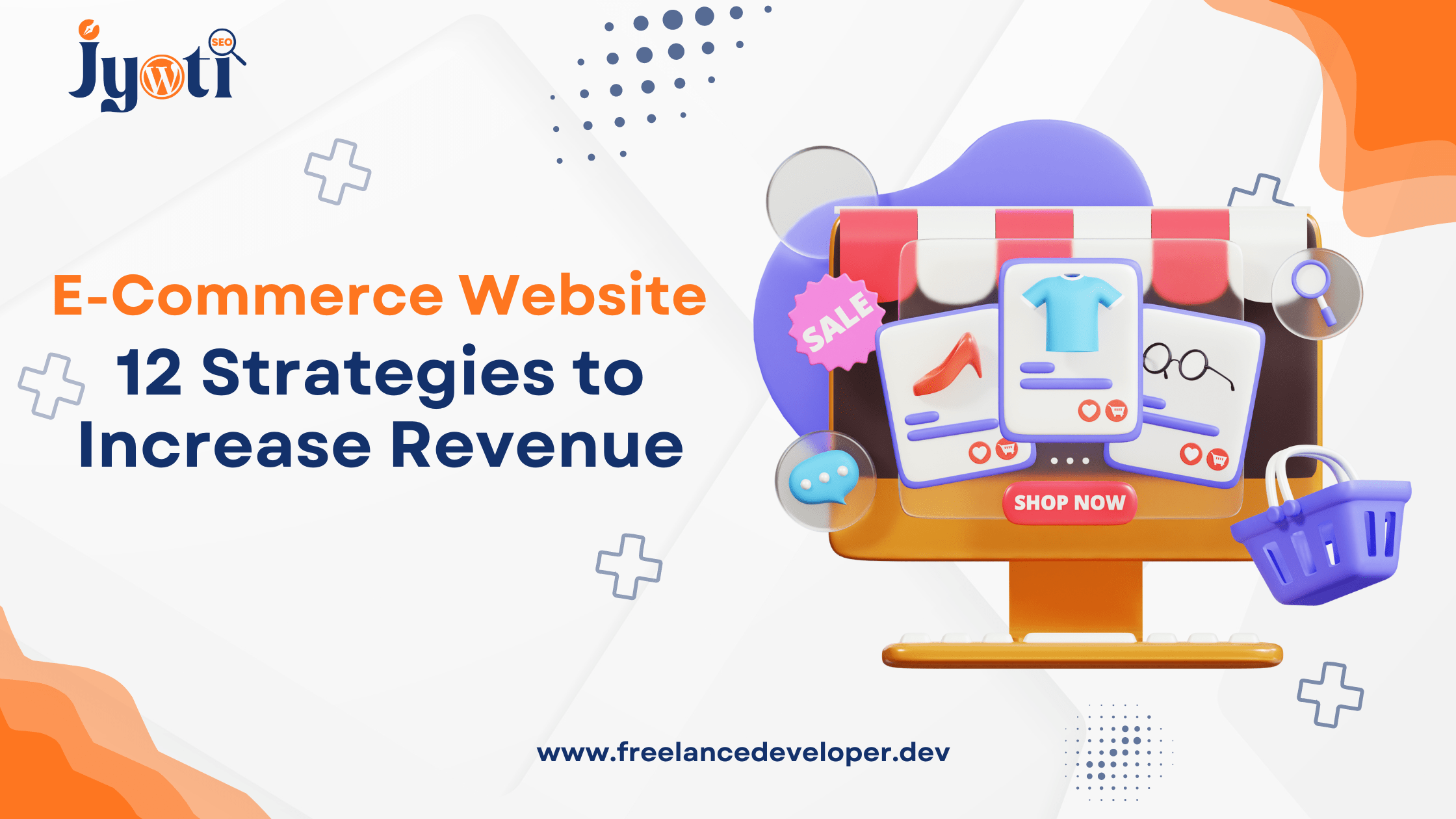TABLE OF CONTENTS
Are you working on creating the best website design for your business? Whether you are an experienced designer or just starting, understanding common mistakes in web design is crucial. These errors can impact the success of your business website.
Building a website is similar to constructing a virtual home for your ideas or business. However, like any construction project, people often make common mistakes. In this blog, we’ll discuss 15 of these web design mistakes and provide tips on avoiding them in 2024. Let’s ensure that your online space is not only welcoming and functional but also represents the best in business website design.
What are the Most common Mistake:
websites are super important for businesses to do well. Since there are so many websites out there, it’s really important to make sure your website stands out.
But, here’s the thing – even experienced web designers sometimes make mistakes that can make their websites not work as well. If you know about these mistakes and do things to avoid them, your website can be awesome and get the results you want.
A good website can impress people, make your brand look great, work well on phones, improve your search engine ranking, and bring in more visitors and customers. On the other hand, if your website is not well-designed, it can hurt your brand and turn people away.
Here are the 15 Most Common Web Design Mistakes:
1. Cluttered Homepage:
A cluttered homepage is one that overwhelms visitors with too much information, graphics, or features, making it difficult for them to find what they need. For instance, imagine a retail website with numerous banners, pop-ups, and product categories all competing for attention on the main page. This can lead to confusion and frustration for users, potentially driving them away from the site. To avoid this, focus on a clean and organized layout that highlights key information and directs users seamlessly to relevant sections.
2. Poor Readability
Ensuring that your website’s text is easily readable is crucial for retaining visitors and delivering a positive user experience. Poor readability can result from factors such as overly complex fonts, insufficient contrast between text and background, or crowded content layout.
For example, using a decorative script font for the main body text may look artistic but can hinder readability, especially for longer passages. To enhance readability, choose clear and legible fonts, maintain a proper contrast ratio, and allow for sufficient white space around the text. This simple adjustment can significantly improve the overall readability of your content, making it more accessible and engaging for your audience.
3. Poor Navigation
Poor navigation can significantly impact a user’s experience on a website. When users struggle to find what they’re looking for, it can lead to frustration and increased bounce rates. For instance, if a website lacks a clear menu structure or has confusing navigation labels, users may abandon the site.
For Example: Imagine visiting an online store where the product categories are poorly organized or the menu items are unclear. Users might have difficulty locating specific products, leading to a suboptimal shopping experience. Effective navigation, on the other hand, ensures a seamless journey for users, helping them quickly find the information or products they seek.
4. Ignoring SEO Best Practices
SEO best practices can significantly impact your website’s visibility on search engines. For instance, failing to incorporate relevant keywords in your content may result in lower search rankings. By ignoring proper SEO techniques, you might miss out on valuable organic traffic.
For example, if you run an online shoe store but don’t optimize product pages with specific keywords like “comfortable running shoes,” potential customers searching for that term may not find your site easily. To enhance your online presence, it’s crucial to adhere to SEO best practices and optimize content effectively.
5. Slow Loading Speed
A crucial aspect of a website’s performance is its loading speed. When a website takes too long to load, it can result in a poor user experience, leading to frustration and potential abandonment by visitors.
For example, consider a scenario where a potential customer clicks on a link to your online store. If the product pages take an eternity to load, the user might lose interest and move on to a competitor’s site.
To avoid this issue, optimizing your website’s loading speed is essential. Implement strategies such as image compression, browser caching, and minimizing unnecessary scripts to ensure that visitors have a seamless and fast browsing experience. A faster-loading website not only improves user satisfaction but also positively impacts search engine rankings, making it a win-win situation for both users and your online presence.
6. Lack of clear calls- to- action (CTAs)
One common mistake in web design is the lack of clear calls-to-action (CTAs), which are essential for guiding users and encouraging desired interactions on a website.
For instance, a homepage without a prominent “Sign Up Now” button for a newsletter subscription or an online service may result in missed opportunities for user engagement. To address this, ensure that your CTAs are strategically placed, visually distinct, and convey a compelling message, prompting visitors to take the intended actions.
7. Inconsistent Branding and Design
When branding and design elements lack consistency, it can confuse your audience and weaken your brand identity. For instance, if your logo, color scheme, or tone of communication varies across different platforms, users may struggle to recognize and connect with your brand. Consistency is key for building trust and a cohesive brand image. Ensure that your branding elements, such as logos and colors, are consistently applied across all channels and materials to create a unified and memorable brand experience for your audience.
8. Ignoring Analytics
Ignoring analytics is akin to driving blindfolded on the information superhighway. Analytics provide invaluable insights into user behavior, helping you make data-driven decisions for website optimization and business success.
For Example: Let’s say you run an e-commerce website. Ignoring analytics means you might miss out on understanding your visitors’ preferences, such as the most viewed products or popular shopping times. By leveraging analytics tools like Google Analytics, you can identify trends, optimize product placement, and tailor your marketing strategies based on concrete data. Ignoring these insights could result in lost opportunities for increased sales and customer satisfaction. Embrace analytics to steer your online presence in the right direction.
9. Unordered Content
Unordered content refers to information or material presented without a clear structure or sequence, making it challenging for the audience to follow. Imagine a blog post where paragraphs lack coherence and there’s no logical flow between ideas. This lack of orderliness can hinder the reader’s understanding and diminish the overall impact of the content.
For Example: consider a webpage where product features are listed randomly without any categorization or hierarchy. Users may find it difficult to locate specific information, leading to a frustrating user experience. To enhance clarity, organizing content into sections or using bullet points can greatly improve the presentation and accessibility of information.
10. Lack of Search Functionality
The lack of search functionality on a website can be a significant drawback for users seeking specific information. Without a search bar, visitors may find it challenging to locate content efficiently, leading to frustration and a potential negative impact on the user experience.
For instance, imagine an e-commerce site without a search feature—customers looking for a particular product might struggle to find it amidst an extensive catalog, discouraging potential purchases. Incorporating an intuitive search option enhances user navigation and satisfaction, making it easier for them to find what they’re looking for.
11. Lack of Social Media Integration
The absence of social media integration on a website can be a missed opportunity for engagement and brand promotion. Social media integration allows users to seamlessly connect with a brand’s online presence and share content across various platforms.
For example, consider a website for an e-commerce store that offers trendy fashion items. By incorporating social media integration, visitors can easily share their favorite products on platforms like Instagram, Facebook, or Twitter, leading to increased visibility and potential customer acquisition. Additionally, the integration can facilitate user login through social media accounts, simplifying the registration process and enhancing the overall user experience.
12. Unreadable Fonts
Using fonts that are difficult to read can significantly impact the user experience on a website.
For example, employing overly decorative or excessively stylized fonts might look visually appealing, but they can make the text challenging to comprehend, especially in smaller sizes. Opting for clear and readable fonts, such as Arial or Open Sans, enhances the overall readability, ensuring that visitors can easily consume the content without strain
13. The website is not secure
The website lacks security measures, putting users at risk of potential threats.
For instance, if a website does not have an SSL certificate, it may display a “Not Secure” warning in the browser’s address bar, indicating that the connection is not encrypted. This can deter users from entering sensitive information on the site, such as passwords or credit card details. Implementing security measures like SSL certificates helps protect user data and fosters trust in the website’s reliability.
14. Poor Color Choice
Choosing the right color palette for your website is crucial for creating a visually appealing and user-friendly experience. Poor color choices can impact readability, accessibility, and overall aesthetics.
For instance, using low-contrast colors or clashing shades may make it difficult for users to navigate or understand your content. A well-thought-out color scheme, on the other hand, enhances brand identity and helps convey the right message to your audience. Consider popular websites like Facebook, which uses a clean and harmonious blue and white color scheme, promoting a seamless and pleasant user experience.
15. Lack of Contact Information
Having a clear and accessible contact section on your website is crucial for building trust with visitors and potential customers. Missing out on essential contact information can lead to frustration and missed opportunities. For instance, if a user wants to inquire about your services, collaborate, or simply ask a question, the absence of contact details can hinder this interaction.
For Example: imagine a user exploring your website, interested in your products or services. However, when they try to find a way to get in touch with you for further details or assistance, there’s no visible contact information. This lack of transparency might discourage them, and they may opt for a competitor with readily available contact details. To avoid this, ensure that your website prominently displays a dedicated section with accurate and up-to-date contact information, including email addresses, phone numbers, and perhaps a contact form for added convenience.
Conclusion
In 2024, avoiding these common web design mistakes is key to creating a successful online presence. For expert guidance, consider partnering with a reputable web design agency or website development. Whether you’re seeking the best website design or collaborating with a freelance developer, prioritizing these strategies will contribute to a visually appealing, functional, and user-friendly website. Contact me now to boost your web presence!
Latest Blogs

As a blog author, I have a strong passion for staying up-to-date with the latest trends and technologies. My expertise lies in WordPress development, SEO optimization, and content writing. Whether you have an idea for a website, I am offering a free consultation call to guide you. I am also available to provide the best SEO and content writing services to boost your online presence.






